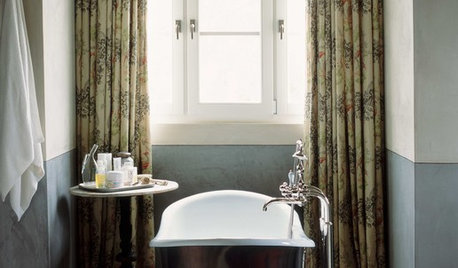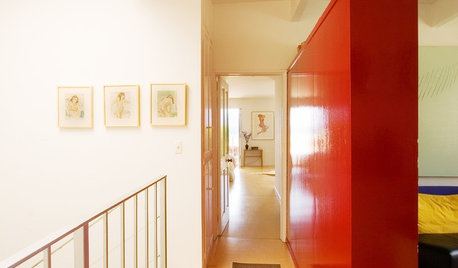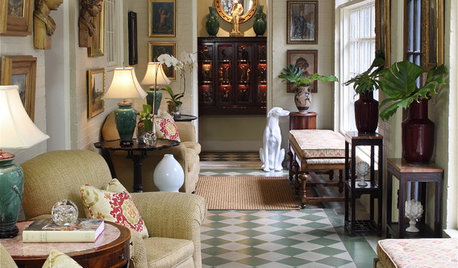Plaster repair and skim coating questions ...
etain
13 years ago
Related Stories

WALL TREATMENTSSurface Smarts: Venetian Plaster
Centuries-old Venetian plaster has made a roaring comeback in modern interiors. Could this old-world wall favorite work in your home?
Full Story
WALL TREATMENTSPick the Right Paint Finish to Fit Your Style
The question of finish may be as crucial as color. See which of these 9 varieties suits your space — and budget
Full Story
DECLUTTERINGClutter vs. Keepers: A Guide to New Year's Purging
Simple questions to get in touch with your clutter comfort level — and figure out what needs to go
Full Story
MATERIALSRaw Materials Revealed: Drywall Basics
Learn about the different sizes and types of this construction material for walls, plus which kinds work best for which rooms
Full Story
HOUSEKEEPINGQuick Fix: How to Patch a Drywall Hole
Dents and dings disappear, leaving your walls looking brand new, with this fix that even a novice can do
Full Story
WORKING WITH PROSHow to Work With a House Painter
A professional house painter may be your best friend for refreshing rooms. Here's what you need to know to get the best result
Full Story
DISASTER PREP & RECOVERYRemodeling After Water Damage: Tips From a Homeowner Who Did It
Learn the crucial steps and coping mechanisms that can help when flooding strikes your home
Full Story
GREAT HOME PROJECTSUpgrade Your Windows for Beauty, Comfort and Big Energy Savings
Bid drafts or stuffiness farewell and say hello to lower utility bills with new, energy-efficient windows
Full Story
WALL TREATMENTS11 Ways to Roll With Wallpaper All Over the Home
Ditch the misconceptions and latch on to some great ideas for decorating your walls with patterned, textural and colorful wallpaper
Full Story
KITCHEN DESIGNWallpaper in the Kitchen: Is It a No or a Go?
A favorite wallpaper brings unexpected color and fun into the kitchen
Full StoryMore Discussions










sombreuil_mongrel
brickeyee
Related Professionals
Northbrook Kitchen & Bathroom Designers · St. Louis Kitchen & Bathroom Designers · Brentwood Kitchen & Bathroom Remodelers · Emeryville Kitchen & Bathroom Remodelers · Lincoln Kitchen & Bathroom Remodelers · Lisle Kitchen & Bathroom Remodelers · Lynn Haven Kitchen & Bathroom Remodelers · Lyons Kitchen & Bathroom Remodelers · Tuckahoe Kitchen & Bathroom Remodelers · Westchester Kitchen & Bathroom Remodelers · Baltimore Architects & Building Designers · Dayton Architects & Building Designers · Memphis Architects & Building Designers · Universal City Architects & Building Designers · Town and Country Architects & Building DesignersetainOriginal Author
kimkitchy
etainOriginal Author
powermuffin